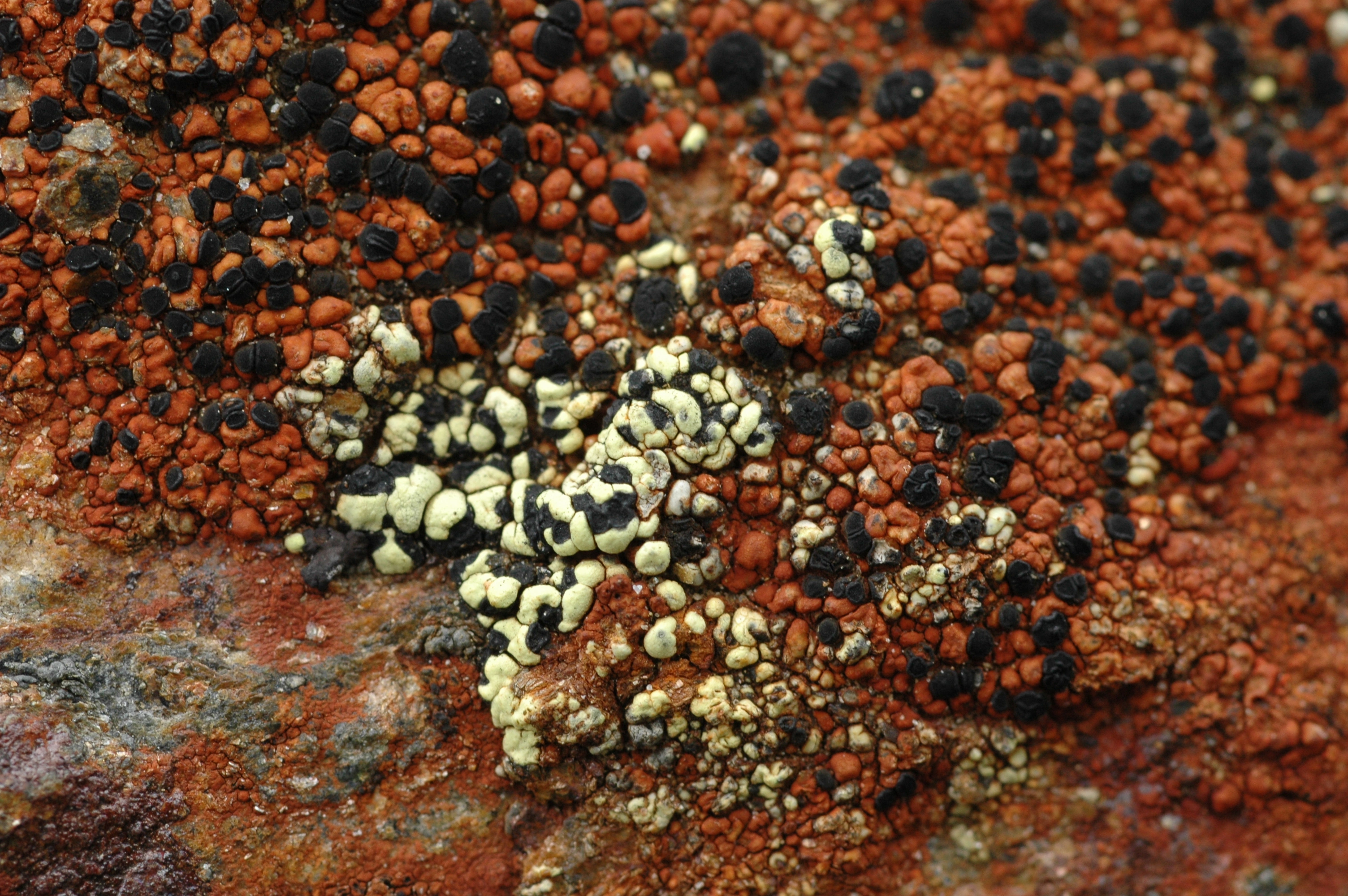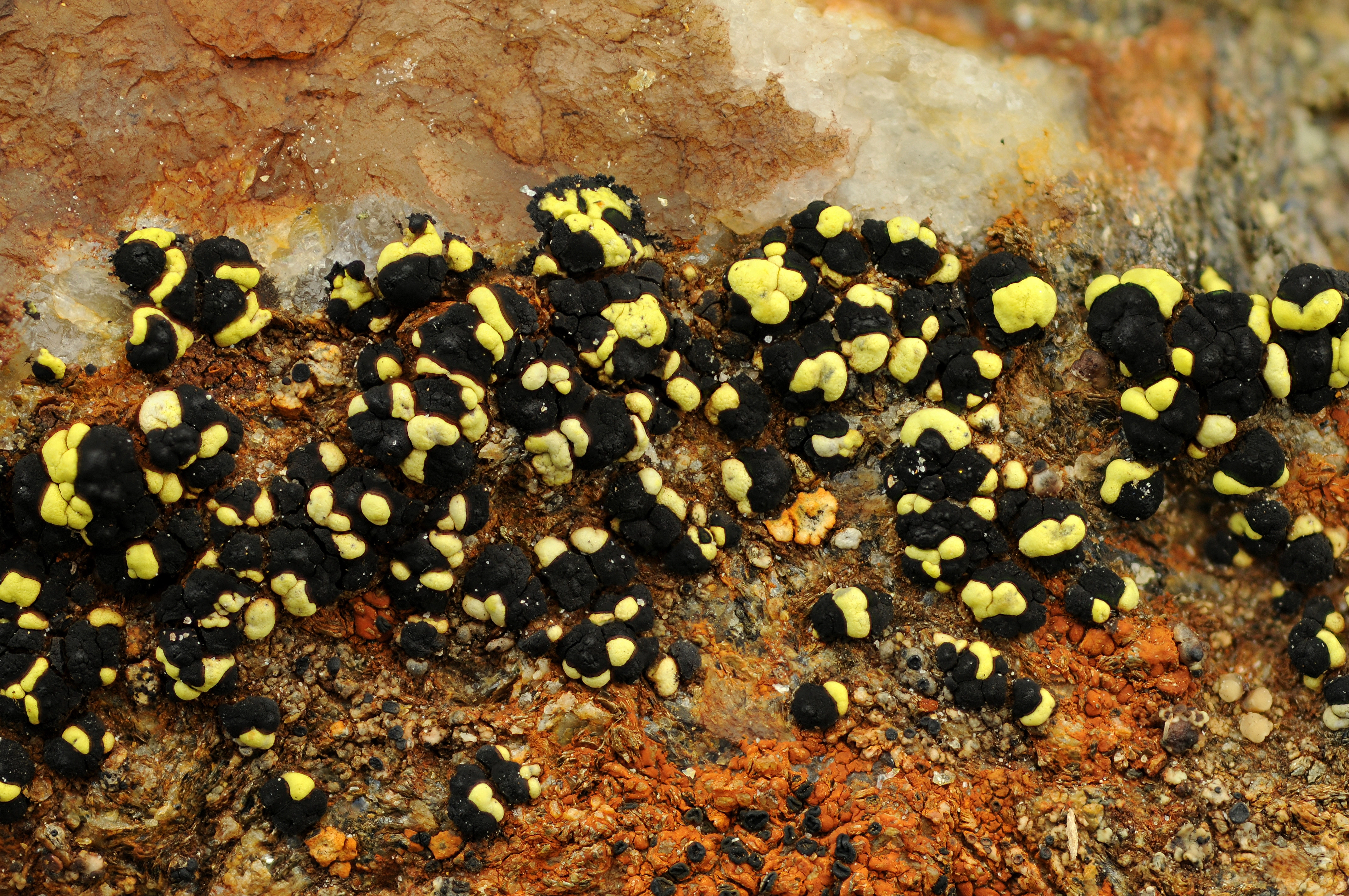Rhizocarpon intermediellum
- Innhold
- Morphology
- Chemistry
- Habitat
- Comment
- Look-alikes
Morphology
Thallus areolate, up to 2 cm diam., growing in the thallus of various crustose lichens when young, may later become autonomous; hypothallus more or less indistinct, black; areolae up to 0.7 mm diam., bright yellow, dull, contiguous or partly scattered, mainly angular, plane to moderately convex, smooth or minutely scabrous; medulla KI+ dark violet. – Apothecia up to 0.5 mm diam., black, epruinose, orbicular to angular, plane, with a rather thick and persistent margin; excipulum brownish black in the rim, paler in the inner part, K– or K+ faintly red; hypothecium dark brown K–; hymenium colourless to pale brown; epihymenium brown, K+ red; no crystals or granules in the apothecia; ascospores 8 per ascus, (1–) 3-septate to submuriform, dark greenish brown, 12–21 × 6–10 µm. – Conidiomata not seen.
Chemistry
Rhizocarpic and sometimes psoromic acid; spot tests: medulla PD– or PD+ yellow, C–.
Habitat
Parasitic, at least when young, in the thallus of Aspicilia, Buellia, Lecidea, Polysporina, Rhizocarpon, and Tremolecia. Growing on calciferous and siliceous rock in the mountains.
Comment
The species is sparingly collected in Norway, but is probably not rare. Other Norwegian yellow, parasitic Rhizocarpon species contain either exclusively 1-septate ascospores (R. effiguratum, R. norvegicum, R. parvum, R. pusillum, and R. santessonii) or eumuriform ascospores (R. dinothetes and R. viridiatrum).

